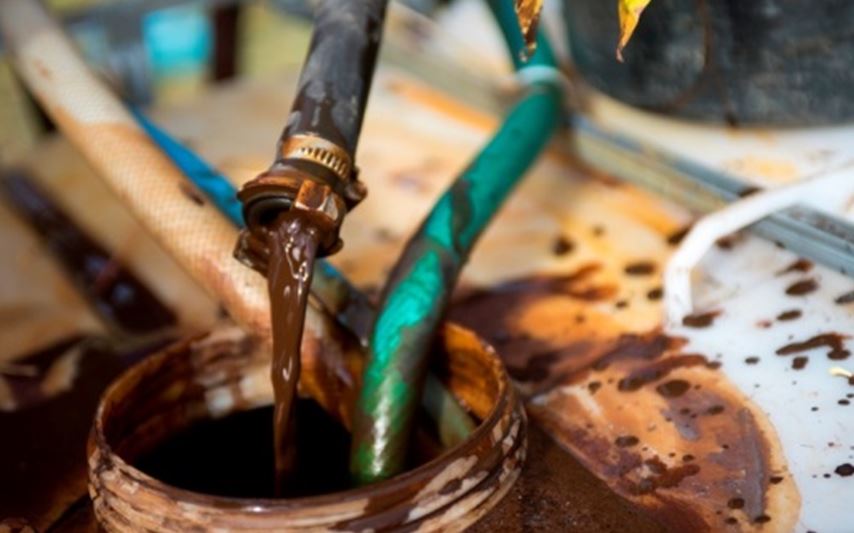WP 3 Non-ZVI and Composite Nanoparticles
|
WP3 Objectives
1. Optimisation and property adjustment of the following particles:
|
Nano-Goethite:
|
The Goethite nanoparticles FeO(OH) are able to support microbial pollutant degradation by iron-reducing processes. Target pollutants: e.g. BTEX
|
|
Carbo-Iron®:
|
The composite of colloidal activated carbon and nanoiron-structures is used as alternative to bare nanoiron. Carbo-Iron® combines sorption of pollutants and their destruction at the iron centres. Target pollutants include chloroethenes, Cr(VI).
|
|
Fe-Zeolites:
|
Iron-doped colloidal zeolites are used as heterogeneous Fenton-like catalysts in ISCO reactions. The zeolites adsorb smaller organic water contaminants; with H2O2 the adsorbed molecules are oxidized. Target pollutants: e.g. MTBE, BTEX or dichloroethane.
|
|
Biomagnetite:
|
Biomanufactured Fe3O4 nanoparticles are used as reducing agent and adsorbent for metals and metalloids, palladium-doped biomagnetite can in addition be used as a hydrogenation and hydrodehalogenation catalyst. Target pollutants; e.g. Cr(VI).
|
|
Non-Fe metals:
|
Aluminium and magnesium combine strong abiotic reducing properties with a much lower density than iron, which makes them potentially easier to transport in aquifers. Target pollutants: e.g. chloroethenes.
|
|
Barium Ferrate:
|
The high oxidation power of Fe(VI) species should be immobilized in a reactive zone of sparingly soluble barium ferrate nanoparticles. Target pollutants are oxidizable organic substances.
|
2. Chemical and physical characterisation of particles
3. Identification of particle application areas
4. Particle supply and up-scaling of particle production for field application |
Prior to the NanoRem project, nanoparticle remediation activities were mainly reduction reactions based on nanoscale zero-valent iron (nZVI). Particles studied in WP3 of the NanoRem project are complement and addendum to nZVI in terms of particle properties, reaction pathways and the treatable contaminant spectrum. Pollutant reduction, oxidation and adsorption are within the focus. All particles are optimised and studied with the intention to finally provide improved alternatives to conventional treatment strategies and knowledge for an efficient selection process. Optimisation and characterisation of all WP 3 particles has now been completed. Two different particle types (Nano-Goethite for oxidation and Carbo-Iron® for reduction) have been chosen for pilot-scale application.
-
Optimisation of up-scaled coating of Nano-Goethite. Commercially available iron oxide nanoparticles have been coated with humic-like material for improved transport and support of microbiological pollutant oxidation by iron-reducing bacteria. NanoRem has developed Nano-Goethite suspensions and optimised them in terms of reactivity, suspension stability, microbiological degradation and costs. Further optimisation was performed through milling, iron loading and disaggregation and stabilization procedures. The material forms long-term stable suspensions and shows good subsurface transport properties. Its ability to support microbial degradation processes is currently being tested in up-scaled pilot experiments and at field scale at the Spolchemie site in the Czech Republic.

Figure 1: Nano-Goethite suspension (J. Bosch, University Duisburg-Essen)
-
Optimisation and up-scaling of Carbo-Iron® production. WP3 has aimed to develop Carbo-Iron® with high iron content while maintaining the carbon-dominated surface properties responsible for improved mobility and compatibility with organic phases for source remediation. NanoRem Partner SciDre is able to produce Carbo-Iron® with > 30 wt% Fe(0) in field-relevant amounts. In order to place the product at the market, cost-efficiency, safety and product properties were considered during particle development and optimisation. The dry material can be handled in air. Carbo-Iron® forms stable suspensions and offers the possibility to either place particles in a predefined volume (relevant for source treatment) or create broader treatment zones (relevant for plume control) depending on the injection mode and the suspension formulation. Its ability to treat perchloroethene-contaminated groundwater is currently being tested in up-scaled pilot experiments and at field scale at the Balassagyarmat site in Hungary.

Figure 2: Left: Scaled-up reactor for Carbo-Iron® production (ScIDre GmbH) Right: Air-stable Carbo-Iron® (K. Mackenzie, UFZ)
-
Biomanufacturing of iron oxides. Both palladised and non-palladized forms of biomagnetite (biomanufactured iron(II,III) oxide) have been produced at larger scales. The particles are magnetic, offer reducing properties and may offer long-term immobilisation of metals and metalloids. Biomagnetite was proven to effectively reduce hexavalent chromium to less toxic and less soluble Cr(III). Reactivity studies in the presence of guar and starch showed good suspension stability and showed no adverse effects on the reactivity potential of biomagnetite. Pd/biomagnetite can be used as catalyst for environmentally relevant hydrogenation and dehalogenation reactions. Biomagnetite particles can be produced in larger amounts and would be ready for up-scaled use.
-
-
Fe-zeolite. Iron-containing zeolites combine the high sorption potential for smaller organic molecules which can be chosen from the various types of zeolites with the ability of the iron species in the zeolite to catalyse Fenton reactions at neutral conditions. The colloidal Fe-zeolites form stable suspensions and are easily injected. An in-situ stationary catalyst zone is generated which acts as an “in-situ subsurface reactor”. Firstly, the particle zone adsorbs the pollutants; and secondly, oxidative pollutant destruction occurs when H2O2 is passed through the zone. An intermittent adsorption/oxidation system would greatly enlarge the impact of H2O2 reagent compared with conventional in-situ chemical oxidation. Fe-Zeolite particles are available in larger amounts and would be ready for up-scaled use.
-
|
|
|